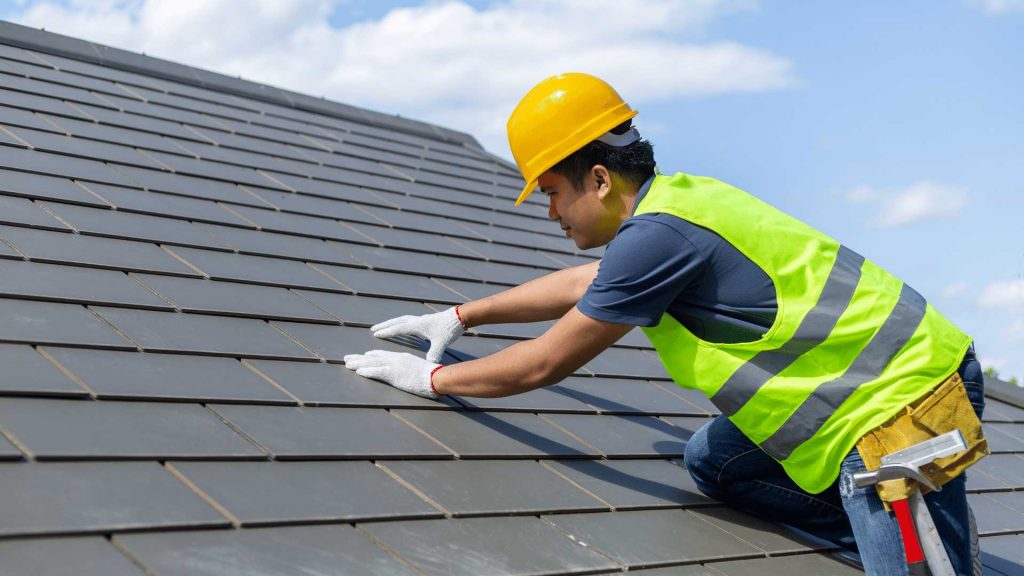Selecting the correct roof ventilation system is essential for ensuring the durability and longevity of a home. It can help reduce energy costs, improve indoor air quality, and increase the overall comfort level of a house or building. This article will discuss how to choose the right roof ventilation system for one’s own needs.
The first step in selecting a suitable system is to identify what type of ventilator is required. There are different types available such as turbine vents, ridge vents, box vents, gable end vents and soffit panels; each with their own advantages and disadvantages. Additionally, there are several factors which should be taken into account when choosing the right type of roofing including local climate considerations, size requirements and other specifications specific to individual homes or buildings.
This guide provides an overview on how to select the best roof ventilation system according to individual needs while taking all relevant factors into consideration. It also outlines important information about installation procedures that must be followed along with tips on proper maintenance and upkeep. With this knowledge at hand readers will gain insight into making informed decisions regarding their own particular situation.
 tile roofing san antonio tx[/caption]
tile roofing san antonio tx[/caption]
 roofing san antonio tx[/caption]
Once you have calculated your home’s specific ventilation needs, you can use those figures to select an appropriate ventilator size for your application. The right choice will depend on local climate conditions and other factors unique to each individual property; however, there are universal guidelines available which provide general guidance on what type of product would best suit your requirements. With careful consideration of all relevant details involved in choosing a suitable system, it’s possible to ensure optimal performance without wasting energy or money on oversized components that won’t meet their purpose effectively.
By determining the exact volume of airflow required and considering various criteria such as R-values, U-values and pressure difference calculations ahead of purchase decisions – not only do you save money but also get piece of mind knowing that your new roof ventilation system is fit for purpose now and well into future years too!
roofing san antonio tx[/caption]
Once you have calculated your home’s specific ventilation needs, you can use those figures to select an appropriate ventilator size for your application. The right choice will depend on local climate conditions and other factors unique to each individual property; however, there are universal guidelines available which provide general guidance on what type of product would best suit your requirements. With careful consideration of all relevant details involved in choosing a suitable system, it’s possible to ensure optimal performance without wasting energy or money on oversized components that won’t meet their purpose effectively.
By determining the exact volume of airflow required and considering various criteria such as R-values, U-values and pressure difference calculations ahead of purchase decisions – not only do you save money but also get piece of mind knowing that your new roof ventilation system is fit for purpose now and well into future years too!
Types Of Roof Ventilation Systems
The right roof ventilation system is important in maintaining a healthy and comfortable home environment. It helps to regulate temperature, airflow, and humidity levels while reducing condensation build-up. There are several types of roof ventilation systems available on the market today, each with its own set of benefits. The most common type of roof ventilator is an exhaust fan or turbine ventilator which works by creating a vacuum that pulls air out from underneath the roof into the atmosphere. This type of system can be used in combination with other forms of ventilation such as ridge vents to create maximum airflow efficiency. Another popular option is natural ventilation using soffit vents at the eaves and gable end walls to allow for passive intake and exhaust of air. Additionally, whirlybird turbines can also be installed along the ridgeline or side wall areas to provide additional ventilation without relying solely on mechanical fans for operation. When choosing a ventilation system for your home, it’s important to consider factors such as energy efficiency, climate conditions, budget constraints and installation requirements before making a final decision. Your local HVAC technician will be able to help you navigate through these considerations when selecting the best solution for your specific needs.Benefits Of Roof Ventilation Systems
Providing adequate ventilation in a roof structure is essential for keeping the home dry, healthy and energy-efficient. Roof ventilation systems are designed to help expel excessive heat and moisture from attics and other areas of the house while providing fresh air circulation at the same time. This article will discuss the benefits associated with installing a roof ventilation system. First and foremost, having a properly functioning roof ventilation system can prevent costly damage that can result from excess humidity building up inside an attic or crawlspace. When hot humid air accumulates in these places it can cause wood rot, mold growth, and even insect infestations which can all lead to expensive repairs over time. Additionally, having appropriate airflow helps keep temperatures more balanced throughout summer months when things begin to heat up outside. This can make houses much more comfortable by minimizing warm spots due to trapped hot air between ceilings and roofs during warmer weather periods. In addition to preventing physical damage from occurring inside homes, efficient roof venting also increases overall efficiency of heating/cooling systems as well as helping reduce monthly utility bills – especially if you live in climates where temperature swings significantly between seasons. By expelling stale indoor air out of your living space through proper venting methods, fresh cool air is able to enter naturally without relying on mechanical HVAC units working overtime whenever needed – thus saving money on power costs! Finally, effective roof vents also add value to any property they’re installed on; making them attractive investments for those looking to upgrade their residence before selling down the line. Overall, investing in a high quality roof ventilation system has many tangible benefits including reducing long-term repair costs, improved comfort levels throughout various climate conditions and increased efficiencies that save homeowners money each month – not only adding real monetary value but peace of mind too!Factors To Consider When Choosing A Roof Ventilation System
Choosing the right roof ventilation system is an important decision that can have a long-term effect on your home’s energy efficiency and comfort. It is essential to consider several factors when selecting a ventilation system for your roof in order to ensure you make the best choice for your individual needs. The primary factor to consider when choosing a roof ventilation system is the climate of your area, as this will determine which type of ventilation system would be most effective. For example, hot climates may require more efficient systems with greater airflow than cooler climates where heat buildup is not as much of an issue. Additionally, some areas are subject to extreme weather conditions such as heavy rain or snowfall; these areas should opt for robust and durable systems designed specifically for harsh environments. Another key consideration when selecting a roof ventilation system is understanding how it works and what purpose it serves. Properly functioning attic ventilation systems regulate air temperature by providing adequate intake and exhaust flows throughout the house; this ensures humidity levels remain balanced while also promoting good indoor air quality. The design of the system must also take into account any existing obstacles such as trees or other structures that could interfere with proper airflow. Ultimately, it is important to select a well-designed system that meets all current building codes and provides optimal performance over time. When looking at different options for roof ventilation systems, homeowners must evaluate their individual needs before making a purchase decision; factoring in local climate considerations, understanding how the system works, and considering potential obstructions will help lead to an informed selection process that results in better overall performance down the road.Assessing Building Structure And Roof Style
Once the goal of roof ventilation has been established, it is important to assess the building structure and roof style in order to determine what type of system will provide adequate airflow. When evaluating a structure’s current layout, there are several considerations that must be taken into account. This includes assessing the shape and size of the roof, its height relative to surrounding structures, any existing attic space or lack thereof, as well as access points for installation and maintenance. The roof style should also be considered when selecting an appropriate ventilation system. The use of traditional shingles or metal panels can have different results depending on their location and orientation. For example, if installed over a flat surface such as a garage or shed, then ridge vents may be more suitable than turbines due to their lower profile design. On sloped roofs with multiple ridges, soffit vents could be used instead for better airflow distribution along each peak. Ultimately, understanding both the architectural features of a structure as well as its intended purpose will help guide the decision-making process towards finding an optimal ventilation solution that meets all requirements while providing maximum efficiency at minimum cost. Together with other factors such as climate conditions and budget constraints, choosing the right roof ventilation system becomes much easier and less daunting task. tile roofing san antonio tx[/caption]
tile roofing san antonio tx[/caption]
Establishing Ventilation Requirements
Establishing the ventilation requirements is an important step in choosing the right roof ventilation system. It involves assessing how much airflow is needed and understanding what type of ventilation will best suit a building’s structure, style and climate needs. Firstly, it is necessary to evaluate how much air movement is required through the attic space, depending on factors such as: – The size of the attic/roof area; – The type and amount of insulation used; – Weather patterns for that location. Secondly, there are two main types of vents – exhaust and intake – which work together to create balanced airflow within the attic space. Exhaust vents help remove hot air from inside while intake vents pull fresh air into the attic. Both should be installed with consideration given to their placement in relation to other components like rafters or trusses. Additionally, some systems can also utilize turbines or power fans to further increase efficiency. Finally, when selecting a ventilator system, it is essential to keep local weather conditions in mind. For example, if extreme temperatures occur frequently then more powerful turbines may be needed compared to locations with milder climates. Similarly, considerations must also be taken regarding snowfall and rain levels for areas prone to these weather events. Ultimately by following this process one can ensure they choose a quality roof ventilation system suitable for their specific needs.R-Value And U-Value Of Roof Ventilation Systems
When choosing a roof ventilation system, it is important to consider the R-value and U-value of the product. The higher the numbers, the better insulated your attic space will be. Here are four key points to keep in mind when considering these values: Firstly, R-values measure insulation resistance from heat loss or gain while U-values measure how much heat is transferred through materials. Secondly, most building codes require an R-value of at least 30 for all roofs. Thirdly, if you live in a hot climate, look for systems with high U-values as this will help reduce cooling costs. Lastly, make sure that whatever option you select has been tested and certified by third parties such as Intertek or UL Environment. In addition to having high ratings for thermal performance, roof ventilation systems should also provide adequate airflow throughout the attic area and be energy efficient. To ensure proper air flow circulation without wasting energy unnecessary check that the fan’s CFM (cubic feet per minute) rating meets local building code requirements. Some fans come equipped with temperature sensors which can detect if there is too much warm air being trapped in your home – making them great options for those looking to save on utility bills. Choosing a roof ventilation system isn’t just about finding the right fit — it’s also understanding what makes one model more suitable than another in terms of both its efficiency and effectiveness. With careful consideration of factors like R & U value rating along with their respective certifications plus proper airflow capabilities – you’ll have no trouble selecting a ventilator that works perfectly for your needs!Sizing Roof Vents And Fans
When selecting a roof ventilation system, sizing the vents and fans is an important factor to consider. Sizing can be determined by calculating the air exchange requirements of the house or building based on its size and layout. By factoring in things like climate, number of occupants, and other factors such as insulation levels, it’s possible to determine how much airflow is needed through the space for adequate ventilation. There are several different methods for calculating these values: * Heat Loss Calculations: This method uses thermal resistance (R-value) and thermal transmittance (U-value) measurements along with temperature differences between inside and outside spaces to calculate heat loss from a structure due to air infiltration or conduction. * Air Change Rate Calculations: This approach calculates the amount of air that needs to be exchanged within a given area over time, taking into account variables like occupancy level, indoor air pollutants, climate conditions, etc. * Pressure Difference Calculations: Using this method involves measuring pressure differences between two points in order to calculate airflow rates; this could be used when comparing exhaust fan flow rates versus natural wind/stack pressures. roofing san antonio tx[/caption]
Once you have calculated your home’s specific ventilation needs, you can use those figures to select an appropriate ventilator size for your application. The right choice will depend on local climate conditions and other factors unique to each individual property; however, there are universal guidelines available which provide general guidance on what type of product would best suit your requirements. With careful consideration of all relevant details involved in choosing a suitable system, it’s possible to ensure optimal performance without wasting energy or money on oversized components that won’t meet their purpose effectively.
By determining the exact volume of airflow required and considering various criteria such as R-values, U-values and pressure difference calculations ahead of purchase decisions – not only do you save money but also get piece of mind knowing that your new roof ventilation system is fit for purpose now and well into future years too!
roofing san antonio tx[/caption]
Once you have calculated your home’s specific ventilation needs, you can use those figures to select an appropriate ventilator size for your application. The right choice will depend on local climate conditions and other factors unique to each individual property; however, there are universal guidelines available which provide general guidance on what type of product would best suit your requirements. With careful consideration of all relevant details involved in choosing a suitable system, it’s possible to ensure optimal performance without wasting energy or money on oversized components that won’t meet their purpose effectively.
By determining the exact volume of airflow required and considering various criteria such as R-values, U-values and pressure difference calculations ahead of purchase decisions – not only do you save money but also get piece of mind knowing that your new roof ventilation system is fit for purpose now and well into future years too!
